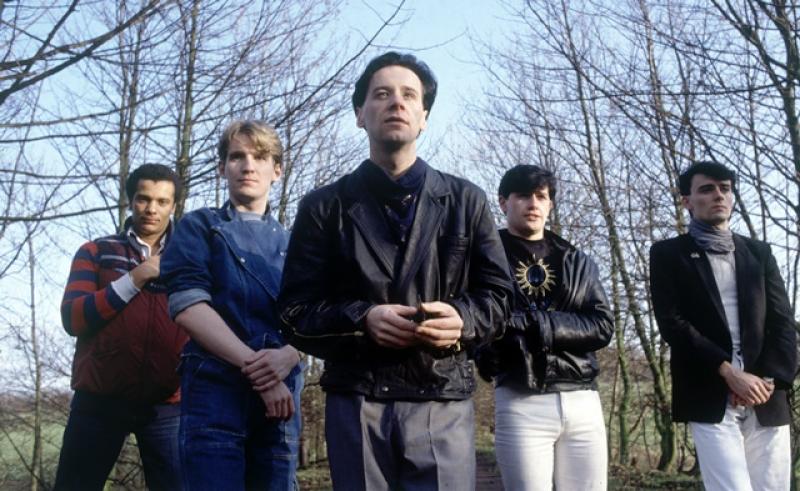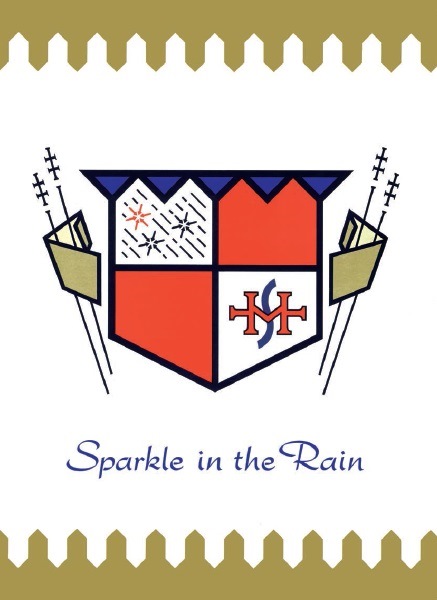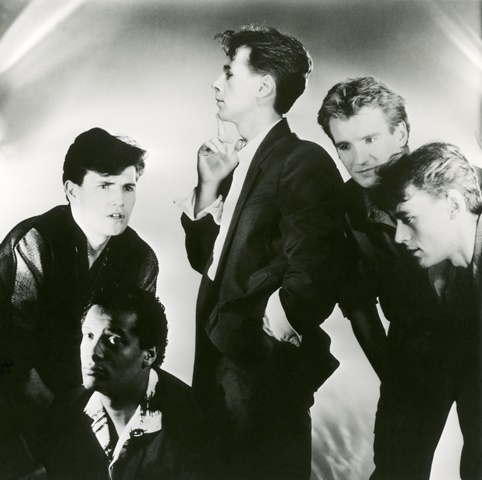Reissue CDs Weekly: Simple Minds | reviews, news & interviews
Reissue CDs Weekly: Simple Minds
Reissue CDs Weekly: Simple Minds
Fantastic bombast and the shadow of U2 on the stadia-embracing ‘Sparkle in the Rain’

 Simple Minds: Sparkle in the Rain
Simple Minds: Sparkle in the Rain
Playing increasingly larger venues throughout 1983 had changed Simple Minds. “In places like that, 50,000 people, there’s just no room for subtlety, and there’s no need for it and there’s no want for it.” The quote from frontman Jim Kerr is telling.
When Sparkle in the Rain was released in 1984, it made good on the promise of “Waterfront”, the single which trailed it. This was a new, heftier Simple Minds: a band retooled for stadia. “Someone recently described the record as 'art school rock with fantastic bombast',” says Kerr elsewhere in the book which comes with this reissue. “I like that.”
It’s fitting then that this belated Super Deluxe Edition Box Set 30th-anniversary edition – described as such in the book, despite being issued 31 years after the album – of Sparkle in the Rain takes the disc count to a hefty five. Disc One is a remastered version of the album; Disc Two collects remixes, single-only tracks and 12-inch versions; Discs Three and Four include a BBC session from September 1983 and a robust, toppy sounding February 1984 live concert. The final disc is a DVD with a new surround-sound mix, promo videos and TV appearances. Album demos mentioned in the liner notes are not included.
Considering its price of £47, that the album was included in a cheapo five-disc box in 2012 and that original pressings sell for as little as 20p (plus postage and packing), this is a fans-only set. Despite the superfluity, this is a fine-looking package with a good book which tells the story with admirable clarity, depth and frankness.
 Reappraising Sparkle in the Rain does little to alter perceptions that the album didn’t hold together. Where “Waterfront” worked by marrying hints of Pink Floyd’s "One of These Days” to the band’s new-found propensity for bombast and their original art-rock leanings, other tracks play with the formula less successfully. The thin “White Hot Day” is a series of crescendos in search of a song. “‘C’ Moon Cry Like a Baby” is aimless. The version of Lou Reed’s “Street Hassle” adds nothing to the original in attempting to turn it into a sing-along but, with its keyboard pulse, does hark back to the band’s own “Seeing Out the Angel” from 1981’s Sons and Fascination.
Reappraising Sparkle in the Rain does little to alter perceptions that the album didn’t hold together. Where “Waterfront” worked by marrying hints of Pink Floyd’s "One of These Days” to the band’s new-found propensity for bombast and their original art-rock leanings, other tracks play with the formula less successfully. The thin “White Hot Day” is a series of crescendos in search of a song. “‘C’ Moon Cry Like a Baby” is aimless. The version of Lou Reed’s “Street Hassle” adds nothing to the original in attempting to turn it into a sing-along but, with its keyboard pulse, does hark back to the band’s own “Seeing Out the Angel” from 1981’s Sons and Fascination.
The liner notes say “Jim felt the quality and quantity of the songwriting could’ve been better.” Kerr himself notes “there’s so many things that I like about it [the album] but I think it is a snapshot…not a landmark. I tend to like the records that arrive fully fledged more than the ones that were en-route to somewhere, and I think Sparkle in the Rain was en-route to somewhere."
One place Simple Minds had visited early in the journey en-route to that somewhere was U2-land. Playing their “New Year’s Day” – a hit in January 1983 – before Sparkle in the Rain’s “Speed Your Love to me” more-than demonstrates the debt. The piano and guitar are uncannily U2-like. U2’s producer Steve Lillywhite was secured for Sparkle in the Rain and – along with the spirit of his other clients – enveloped proceedings in a characteristically huge Eighties sound. The album was about sonic architecture rather than song.
The BBC session version of “Waterfront” offers a neat before and after comparison. Lacking the grandeur of its Lillywhite-produced counterpart, it could not have been the hit it became. It needed the pumping up. Once imbued with “fantastic bombast” and filchings from U2, the world’s stadia were there for the taking. There was no room for subtlety.
The future of Arts Journalism
You can stop theartsdesk.com closing!
We urgently need financing to survive. Our fundraising drive has thus far raised £49,000 but we need to reach £100,000 or we will be forced to close. Please contribute here: https://gofund.me/c3f6033d
And if you can forward this information to anyone who might assist, we’d be grateful.

Subscribe to theartsdesk.com
Thank you for continuing to read our work on theartsdesk.com. For unlimited access to every article in its entirety, including our archive of more than 15,000 pieces, we're asking for £5 per month or £40 per year. We feel it's a very good deal, and hope you do too.
To take a subscription now simply click here.
And if you're looking for that extra gift for a friend or family member, why not treat them to a theartsdesk.com gift subscription?
more New music
 Heartbreak and soaring beauty on Chrissie Hynde & Pals' Duets Special
The great Pretender at her most romantic and on the form of her life
Heartbreak and soaring beauty on Chrissie Hynde & Pals' Duets Special
The great Pretender at her most romantic and on the form of her life
 The Last Dinner Party's 'From the Pyre' is as enjoyable as it is over-the-top
Musically sophisticated five-piece ramp up the excesses but remain contagiously pop
The Last Dinner Party's 'From the Pyre' is as enjoyable as it is over-the-top
Musically sophisticated five-piece ramp up the excesses but remain contagiously pop
 Moroccan Gnawa comes to Manhattan with 'Saha Gnawa'
Trance and tradition meet Afrofuturism in Manhattan
Moroccan Gnawa comes to Manhattan with 'Saha Gnawa'
Trance and tradition meet Afrofuturism in Manhattan
 Soulwax’s 'All Systems Are Lying' lays down some tasty yet gritty electro-pop
Belgian dancefloor veterans return to the fray with a dark, pop-orientated sound
Soulwax’s 'All Systems Are Lying' lays down some tasty yet gritty electro-pop
Belgian dancefloor veterans return to the fray with a dark, pop-orientated sound
 Music Reissues Weekly: Marc and the Mambas - Three Black Nights Of Little Black Bites
When Marc Almond took time out from Soft Cell
Music Reissues Weekly: Marc and the Mambas - Three Black Nights Of Little Black Bites
When Marc Almond took time out from Soft Cell
 Album: Mobb Deep - Infinite
A solid tribute to a legendary history
Album: Mobb Deep - Infinite
A solid tribute to a legendary history
 Album: Boz Scaggs - Detour
Smooth and soulful standards from an old pro
Album: Boz Scaggs - Detour
Smooth and soulful standards from an old pro
 Emily A. Sprague realises a Japanese dream on 'Cloud Time'
A set of live improvisations that drift in and out of real beauty
Emily A. Sprague realises a Japanese dream on 'Cloud Time'
A set of live improvisations that drift in and out of real beauty
 Trio Da Kali, Milton Court review - Mali masters make the ancient new
Three supreme musicians from Bamako in transcendent mood
Trio Da Kali, Milton Court review - Mali masters make the ancient new
Three supreme musicians from Bamako in transcendent mood
 Hollie Cook's 'Shy Girl' isn't heavyweight but has a summery reggae lilt
Tropical-tinted downtempo pop that's likeable if uneventful
Hollie Cook's 'Shy Girl' isn't heavyweight but has a summery reggae lilt
Tropical-tinted downtempo pop that's likeable if uneventful
 Pop Will Eat Itself's 'Delete Everything' is noisy but patchy
Despite unlovely production, the Eighties/Nineties unit retain rowdy ebullience
Pop Will Eat Itself's 'Delete Everything' is noisy but patchy
Despite unlovely production, the Eighties/Nineties unit retain rowdy ebullience

Add comment